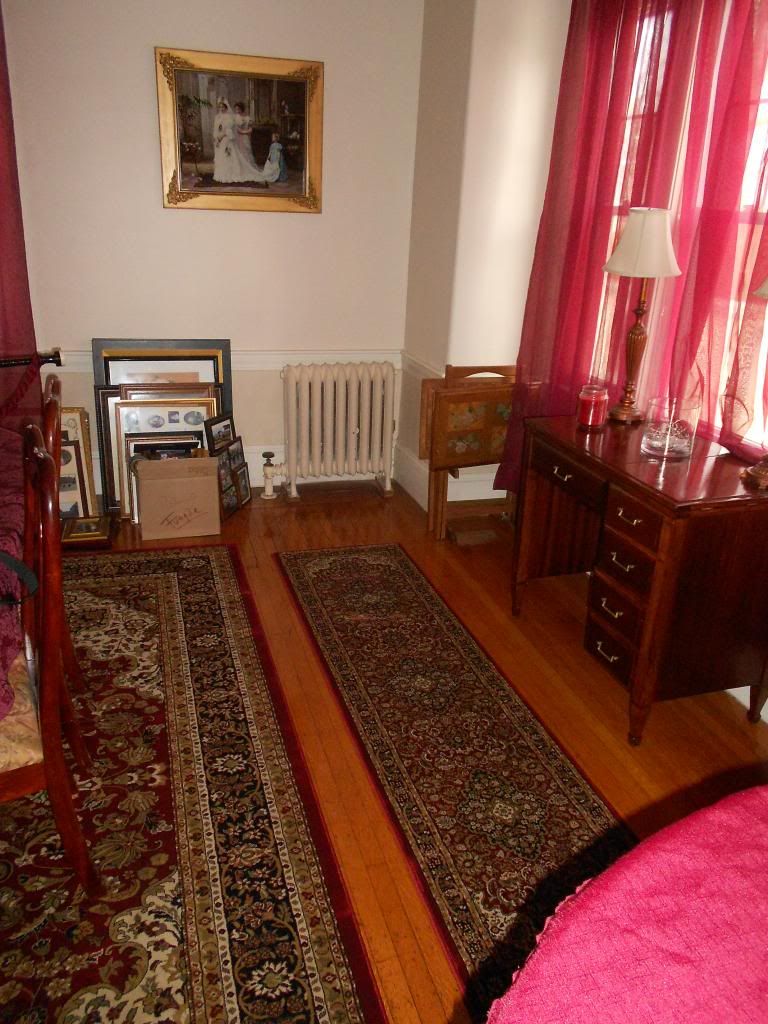The Wall Street Journal
An Artisan's Devotion to Art Deco
Ludwig Vogelgesang—equipped with special tools, rare materials and traditional know-how—revives furniture of the 1920s and 1930s
By J.S. MARCUS
April 3, 2014 8:39 p.m. ET
Cabinetmaker Ludwig Vogelgesang Beatriz da Costa for The Wall Street Journal
German-Brazilian cabinetmaker Ludwig Vogelgesang is preserving France's Art Deco furniture-making tradition one piece at a time from his north Paris workshop.
Mr. Vogelgesang, 60 years old, divides his work between restoring original pieces and creating new designs using period methods. The owner of Ludwig & Dominique, an atelier he co-founded in 1980, Mr. Vogelgesang has become an expert in using the rare and expensive materials preferred by the original Art Deco cabinetmakers: ivory, Macassar ebony, mica and shagreen (or stingray).
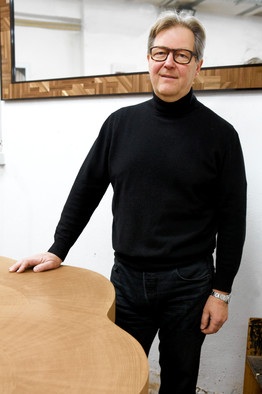
Art Deco conquered the design world in the 1920s and 1930s, influencing everything from American ashtrays to Indian palaces. It reached its apogee in the west of Paris, in the homes of the upper classes.
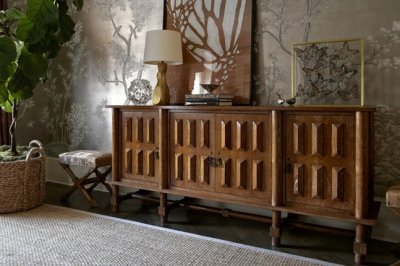
An oak Jacques Adnet buffet, possibly from the 1930s, that Mr. Vogelgesang restored. Mark Roskams
Mr. Vogelgesang has the designation ebéniste d'art. That means he is an "art cabinetmaker"—skilled in the techniques associated with classic 18th-century French furniture and qualified to supervise specialists in related disciplines, such as gilders and upholsterers, to complete a piece.
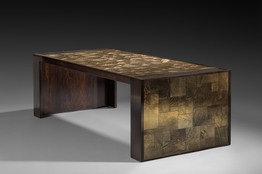
A 2012 coffee table with Bernard Pictet glass Jacques Pepion
Tools by Lie-Nielsen Beatriz da Costa for The Wall Street Journal
A 2006 parchment-based dining table Phillip Ennis/Barbara Lane Interiors
The workshop has a staff of six. (Former partner Dominque Talbot, a cabinetmaker, retired in 2006.) Typically, interior designers and architects—such as Paris's Jacques Grange and New York's Peter Marino and Barbara Lane —bring clients to the company's attention. Auction houses also consult him about restoration, he adds.
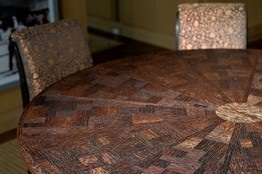
One Christie's referral led to work on the Lady Anne yacht, commissioned by Jerome Fisher, co-founder of the Nine West fashion company, and his wife, Anne. The couple asked for about 100 Art Deco-inspired pieces for the yacht's interior. Mr. Vogelgesang says his contribution to the project, finished in 2006, took about three years and cost several hundred thousand dollars. The yacht now belongs to Washington Redskin's owner Daniel Snyder.
Mr. Vogelgesang—born in Brazil to German parents—went to Paris in 1974, and learned the art of making and restoring furniture.
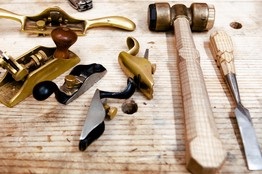
He uses tools from outside France. About 40% are from Lie-Nielsen Toolworks, of Maine, such as a special plane to finish a wood surface. The postwar move to mass production of furniture meant traditional techniques in France "were completely forgotten," he says.
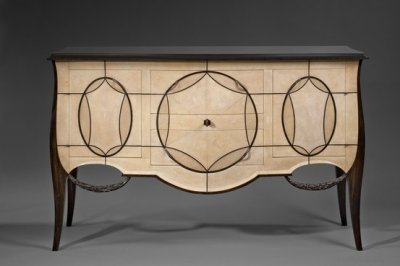
A 2011 shagreen and ebony commode Jacques Pepion
Occasionally, Mr. Vogelgesang improves on materials or techniques. In the Art Deco period, glue was made "from butchers' leftovers," he says, "and the quality wasn't the best." Now, he uses a concentrated version of edible gelatin, and veneers are then sealed in vacuums. Vacuum-sealed glue is essential for applying shagreen, the stingray hide that he sources in southeast Asia. Shagreen, which can also be made of shark, is commonly used as a high-end leather product. The version necessary for Art Deco furniture must come from a certain kind of stingray with a distinctive pearl-patterned skin, and has to be sun-dried rather than tanned.
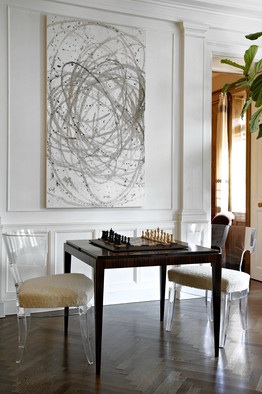
An ebony game table Mark Roskams
Currently, the workshop is restoring an original 1920s shagreen-covered coffee table from French designer André Groult (1884-1966) and 10 exotic-wood pieces designed by Émile-Jacques Ruhlmann (1879-1933), whom many consider the father of Art Deco. Over the decades, Mr. Vogelgesang has restored some 450 Ruhlmann pieces, he says, along with many by Jean-Michel Frank (1895-1941), whose late Art Deco designs can get top dollar at auction.
The workshop also is making a custom dining table for New York clients. Made of four related oak tables, it can accommodate a family or dozens of guests. Other New York clients commissioned a buffet with a surface of parchment—a favorite Art Deco material. The table costs €100,000, or $138,000 and the buffet, $36,000.
A growing number of Mr. Vogelgesang's clients are American, many from New York City. "Art Deco looks good in skyscrapers," he says.
An Artisan's Devotion to Art Deco
Ludwig Vogelgesang—equipped with special tools, rare materials and traditional know-how—revives furniture of the 1920s and 1930s
By J.S. MARCUS
April 3, 2014 8:39 p.m. ET
Cabinetmaker Ludwig Vogelgesang Beatriz da Costa for The Wall Street Journal
German-Brazilian cabinetmaker Ludwig Vogelgesang is preserving France's Art Deco furniture-making tradition one piece at a time from his north Paris workshop.
Mr. Vogelgesang, 60 years old, divides his work between restoring original pieces and creating new designs using period methods. The owner of Ludwig & Dominique, an atelier he co-founded in 1980, Mr. Vogelgesang has become an expert in using the rare and expensive materials preferred by the original Art Deco cabinetmakers: ivory, Macassar ebony, mica and shagreen (or stingray).

Art Deco conquered the design world in the 1920s and 1930s, influencing everything from American ashtrays to Indian palaces. It reached its apogee in the west of Paris, in the homes of the upper classes.

An oak Jacques Adnet buffet, possibly from the 1930s, that Mr. Vogelgesang restored. Mark Roskams
Mr. Vogelgesang has the designation ebéniste d'art. That means he is an "art cabinetmaker"—skilled in the techniques associated with classic 18th-century French furniture and qualified to supervise specialists in related disciplines, such as gilders and upholsterers, to complete a piece.

A 2012 coffee table with Bernard Pictet glass Jacques Pepion
Tools by Lie-Nielsen Beatriz da Costa for The Wall Street Journal
A 2006 parchment-based dining table Phillip Ennis/Barbara Lane Interiors
The workshop has a staff of six. (Former partner Dominque Talbot, a cabinetmaker, retired in 2006.) Typically, interior designers and architects—such as Paris's Jacques Grange and New York's Peter Marino and Barbara Lane —bring clients to the company's attention. Auction houses also consult him about restoration, he adds.

One Christie's referral led to work on the Lady Anne yacht, commissioned by Jerome Fisher, co-founder of the Nine West fashion company, and his wife, Anne. The couple asked for about 100 Art Deco-inspired pieces for the yacht's interior. Mr. Vogelgesang says his contribution to the project, finished in 2006, took about three years and cost several hundred thousand dollars. The yacht now belongs to Washington Redskin's owner Daniel Snyder.
Mr. Vogelgesang—born in Brazil to German parents—went to Paris in 1974, and learned the art of making and restoring furniture.

He uses tools from outside France. About 40% are from Lie-Nielsen Toolworks, of Maine, such as a special plane to finish a wood surface. The postwar move to mass production of furniture meant traditional techniques in France "were completely forgotten," he says.

A 2011 shagreen and ebony commode Jacques Pepion
Occasionally, Mr. Vogelgesang improves on materials or techniques. In the Art Deco period, glue was made "from butchers' leftovers," he says, "and the quality wasn't the best." Now, he uses a concentrated version of edible gelatin, and veneers are then sealed in vacuums. Vacuum-sealed glue is essential for applying shagreen, the stingray hide that he sources in southeast Asia. Shagreen, which can also be made of shark, is commonly used as a high-end leather product. The version necessary for Art Deco furniture must come from a certain kind of stingray with a distinctive pearl-patterned skin, and has to be sun-dried rather than tanned.

An ebony game table Mark Roskams
Currently, the workshop is restoring an original 1920s shagreen-covered coffee table from French designer André Groult (1884-1966) and 10 exotic-wood pieces designed by Émile-Jacques Ruhlmann (1879-1933), whom many consider the father of Art Deco. Over the decades, Mr. Vogelgesang has restored some 450 Ruhlmann pieces, he says, along with many by Jean-Michel Frank (1895-1941), whose late Art Deco designs can get top dollar at auction.
The workshop also is making a custom dining table for New York clients. Made of four related oak tables, it can accommodate a family or dozens of guests. Other New York clients commissioned a buffet with a surface of parchment—a favorite Art Deco material. The table costs €100,000, or $138,000 and the buffet, $36,000.
A growing number of Mr. Vogelgesang's clients are American, many from New York City. "Art Deco looks good in skyscrapers," he says.

